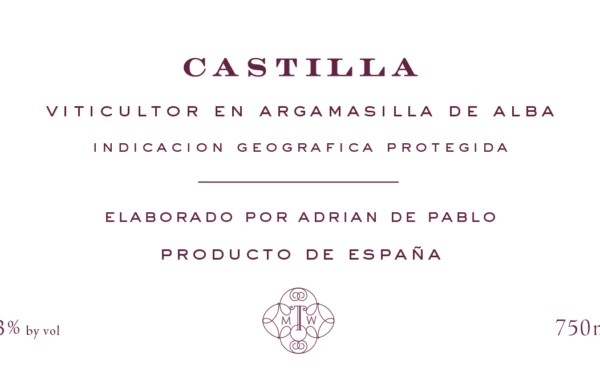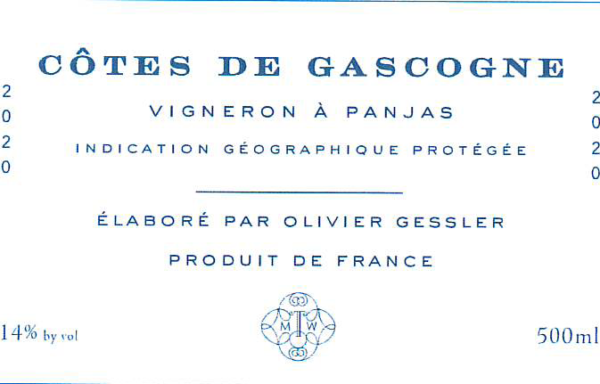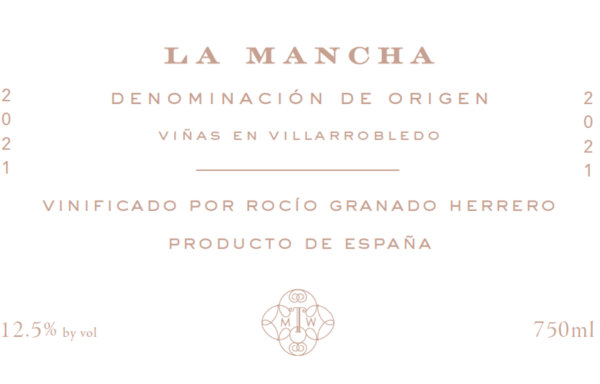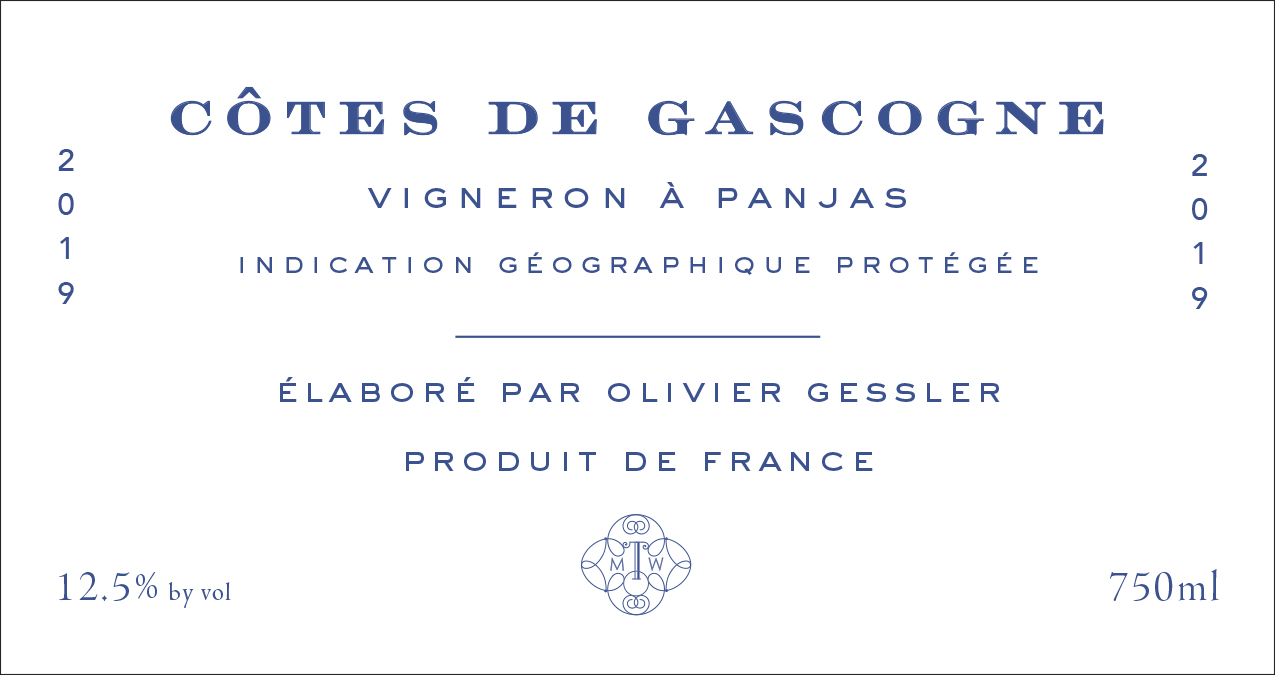
IGP Côtes de Gascogne shares the same land surface as Armagnac, in the beautiful French Southwest. The Gessler family settled here, in the heart of Bas-Armagnac, in 1928. We are now on the 4th generation – a robust family business with 20 full time employees. This is one of the more thoughtfully farmed properties – registered HVE 3 and in organic conversion. They tend to indigenous varietals such as Colombard, Ugni Blanc, and Gros Manseng, from which this wine is made.
Wine Description
Reviews and Scores
87 Points – “Best Buy” – (2023 vintage review) – Wine Enthusiast, “Best of the Year” December Issue 2024
Vintage Notes:
2024: If the 2023 vintage can be considered as one warmest vintage ever recorded in Gascony, the 2024 vintage was the total opposite. Indeed, with a cool spring and summer, the grapes did no ripen as fast as the previous year, which consequently led to a delayed harvest. The 2024 Côte de Gascogne vintage, however, is perfectly balanced between great acidity level and freshness, which is essential for white Gascony wine.
2023: The 2023 Côtes de Gascogne vintage is the result of a warm spring and summer, which led to the grapes ripening rapidly. Despite the exceptional heat this year, the 2023 Côte de Gascogne vintage has developed rich aromas and enhanced the characteristics of the grapes, giving the wine a low acidity level but truly gourmet taste.
2021: The character of the 2021 vintage is its multiple climatic hazards, with frost in April and a cool temperate summer. The mild, dry winter enhanced a fairly early bud break in the vines, with increased sensitivity to frost at the end of March/beginning of April. The effects of frost were largely underestimated because not very visible, but on the most precocious grape varieties, such as Colombard, at harvest the yields were down 30%. The vegetative period from April to July was marked by cool humid weather, which required meticulous monitoring of the vineyard. Some mildew-related damage was observed on sensitive grape varieties. The temperate and humid summer caused disease in certain sectors and most of all on the Gros Manseng, a very sensitive grape variety. To prevent this risk, part of the grass was removed at the end of June with trimming and leaf stripping kept to a minimum. In mid-August, the summer heat caused hailstorms that affected part of Gascony with welcome rain allowing a smooth ripening of the Sauvignon Blanc. Warm and dry late August, picking of the Sauvignon Blanc began on 02/09/2021. In Gascony, Sauvignon Blanc is the grape variety that performed best this year, it was spared from the hazards; too late for frost, not sensitive enough for mildew, harvested early before the September heat and softened by the mid-August rains.
2020: This was the year when Colombard performed to its best. Ideal summer temperatures with a cool mid-August provided the perfect conditions for both Colombard and Sauvignon Blanc to hit a high note of aromas. Nature was given a holiday from pollution in Spring with a 10-week National lockdown and this strengthened the vinestock remarkably. These two varieties blended with optimally ripe Gros Manseng and Ugni Blanc, give a finished mix with a superb balance of fresh vivacious fruit, delicate acidity and surprising length. Gascogne continues to be a great climate for crunchy and fresh white wines.
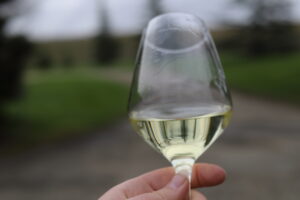

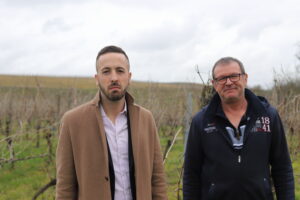
Gascogny, the mythical land of D’Artagnan that was once the epicenter of western Roman Gaul (2nd century), and that later the English held, is a beautiful part of the French Southwest in the Occitania Region – speckled with medieval hilltop towns. Gascogny had once 100,000 hectares of vines and now has just 15,000 hectares. Bordering the enormous Landes pine forest and wedged between the Atlantic and the Pyreneés, the vines breathe pure air and oceanic winds mixed with a warm foehn wind from the Saharan Desert. IGP Côtes de Gascogne shares the same land surface as Armagnac. Of the 3 subzones, our domaine is deeply in the Bas-Armagnac. The soils here are clay and sand, more specifically red sable and alluvial subsoil.
The history of the Occitania region dates to the pre-Roman Gaul because of the location of the region. Located in the South part of France, it was obviously one of the first piece of Gaulle conquered by Rome, beginning in 121 BC with the establishment of the province of “Gallia Narbonensis” and the founding of the current city of Narbonne. The arrival of the Romans brought major and lasting changes to the region such as the urbanization which followed the Roman patterns, with the development of cities such as Nimes, Arles and Toulouse. Roman influence extended beyond architecture, reshaping local administration, law, and the economy—particularly through the introduction of viticulture. This early Romanization, facilitated by the construction of key roads from Italy to Spain, made the region one of the Roman Empire’s most dynamic cultural centers in Gaul. Thus, the Romans had fundamental influence in the development of the Occitania region, especially regarding the development of viticulture, making the region as one of the oldest vineyards in France.
This lack of recognition is largely tied to the rapid rise of the Bordeaux wine industry during the Middle Ages. The development of the port of Bordeaux enabled easy access to international markets, especially England, which became a key destination for wine exports at this time. Moreover, Bordeaux authorities imposed a commercial monopoly known as the “privilege of Bordeaux Wines”, which restricted the sale of wines from inland regions (especially Occitania via the Garonne River which connects the region to Bordeaux’s ports) until Bordeaux wines had been sold. This practice significantly stopped the commercial expansion of South-Western wines and contributed to their long-standing marginalization.
However, the South-West is home to incredible resources, with a rich diversity of terroirs and a wealth of native grape varieties that are unknown outside the region. The mosaic of vineyards offers a wide range of styles, traditions, and expressions. In recent years, the region has begun to gain new momentum, as winemakers focus on quality, authenticity, and sustainable practices. Thanks to renewed interest from wine consumers, seeking originality and character, the South-West is gradually emerging from the shadow of Bordeaux and carving out its own identity on the national and international market.
Having immigrated from Switzerland, the Gessler family settled here in 1928. We are now on the 4th generation – operating a robust family business with 20 full time employees. This is one of the more thoughtfully farmed properties – registered HVE 3 and in organic conversion. They tend to indigenous varietals with which dry white and red wines along with Armagnac are made.
Colombard is the offspring of Chenin Blanc and Gouais Blanc. This makes the grape the sibling of the Armagnac Meslier-Saint-François and the nearly extinct Cognac grape Balzac blanc. Tart and fruity Ugni Blanc is also known as Trebbiano. Gros Manseng is a dry varietal found in Jurançon wines.
